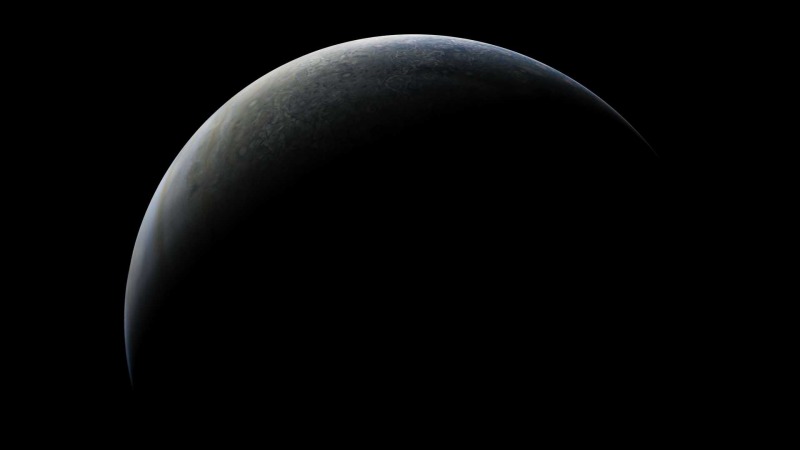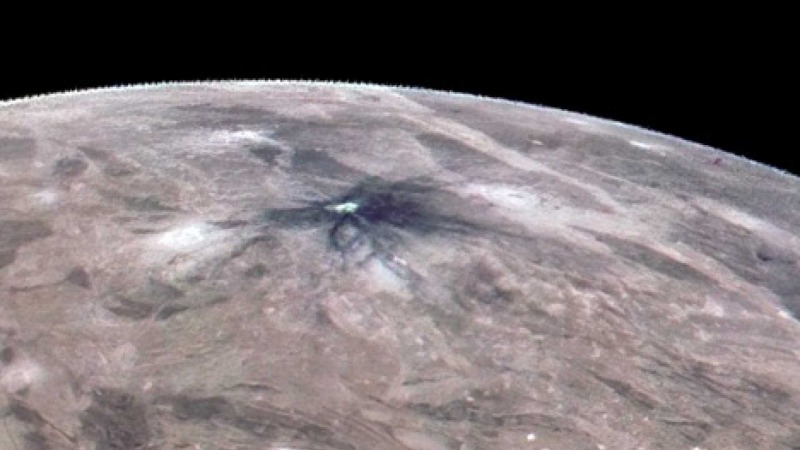NASA probe snaps stunning photos of crescent Jupiter and its moon Ganymede
The images were uploaded by citizen scientists using data from the Juno mission.

Data captured by NASA's Juno spacecraft is revealing incredible new images of Jupiter and its moon Ganymede.
In a blog post on Monday (Feb. 14), Juno mission team members shared images of a huge crater on Ganymede as well as a backlit picture of Jupiter that the spacecraft captured during its dips in and out of Jupiter's radiation-filled environment.
"If you could ride along with NASA’s Juno spacecraft as it approaches Jupiter during one of its regular close passes by the giant planet, you would be treated to a striking vista similar to this one," the website stated about the Jupiter images.
In photos: NASA's Juno Mission to Jupiter

The image of Ganymede (above) was captured during a June 2021 pass when Juno flew only 650 miles (1,046 kilometers) above Ganymede’s surface. Citizen scientist Thomas Thomopoulos created this enhanced-color image using data from the JunoCam camera.
The image shows the large crater Kittu, which is roughly 9 miles (15 kilometers) across and has darker material surrounding it that ejected when a small asteroid crashed into the surface.
"Most of Ganymede's craters have bright rays extending from the impact scar, but about one percent of the craters have dark rays," the blog post stated.
Get the Space.com Newsletter
Breaking space news, the latest updates on rocket launches, skywatching events and more!
"Scientists believe that contamination from the impactor produced the dark rays," the post added. "As time passes, the rays stay dark because they are a bit warmer than the surroundings, so ice is driven off to condense on nearby colder, brighter terrain."

Gill created the backlit image of Jupiter (above) using raw data from the JunoCam instrument, including seven images taken by Juno's 39th close pass of Jupiter on Jan. 12.
NASA noted that this view of Jupiter is impossible from Earth, even in a telescope, because Jupiter's orbit is always outside Earth's and thus is only visible (from our planet) in full illumination from the sun.
Follow Elizabeth Howell on Twitter @howellspace. Follow us on Twitter @Spacedotcom and on Facebook.
Join our Space Forums to keep talking space on the latest missions, night sky and more! And if you have a news tip, correction or comment, let us know at: community@space.com.

Elizabeth Howell (she/her), Ph.D., was a staff writer in the spaceflight channel between 2022 and 2024 specializing in Canadian space news. She was contributing writer for Space.com for 10 years from 2012 to 2024. Elizabeth's reporting includes multiple exclusives with the White House, leading world coverage about a lost-and-found space tomato on the International Space Station, witnessing five human spaceflight launches on two continents, flying parabolic, working inside a spacesuit, and participating in a simulated Mars mission. Her latest book, "Why Am I Taller?" (ECW Press, 2022) is co-written with astronaut Dave Williams.









